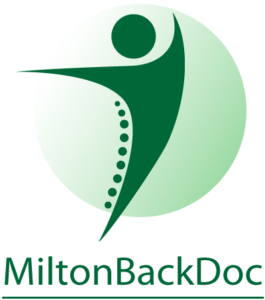You may have heard your Doctor or your Physiotherapist or your Chiropractor use this term before. You may have heard it on a medical drama on television. Or you might have heard your office-mate-who-is-also-a-hardcore-runner mention it. But what does it really mean? Let’s break it down:
Cumulative – from math class, this means we keep adding up.
Micro – easy one right? This means really really really small.
Trauma – we all know this one. ER taught me it well.
Micro + Trauma = a very small or microscopic lesion or injury
So when you put it all together, and put it in the context of your pain, it really means that you have done a little damage to muscle, bone, ligament or tendons, many many times over, without giving your body time to heal in between. This phenomena is also widely known as an overuse injury.
Some examples of common overuse injuries are:
Tennis Elbow
Runner’s knee
Achilles Tendinitis
Shin Splints
How do I identify an overuse injury?
There are four stages of overuse injury:
- Pain in the affected area after physical activity
- Pain during physical activity, not restricting performance
- Pain during physical activity, restricting performance
- Chronic, persistent pain even at rest
Isn’t this the same thing as a Repetitive Strain Injury?
Cumulative Microtrauma can cause tendinopathy and tenosynovitis (inflammation of tendons and the synovial sleeve) and when it does, this is referred to as Repetitive Strain Injury or RSI. In other words, RSI is a specific sub-category of overuse injury.
Am I at risk?
There are several occupations which inherently carry risk of an overuse injury; those which involve repetitive motion throughout the work day. Some examples are assembly line workers, or jobs which involve heavy computer use, and even your Massage Therapist! Many sports also carry inherent risk of overuse, particularly golf, baseball, swimming and running, among others.
What can cause it?
Two common causes of overuse injury are:
- Training errors. Training errors can happen if you take on too much physical activity too quickly. By going too fast or exercising for too long, or even over-doing one type of activity can strain your muscles and lead to an overuse injury.
- Technique errors. Improper technique also can take its toll on your body. If, for example, you use poor form while performing a set of strength training exercises, you may overload compensatory muscles and cause an overuse injury.
So what can I do?
You can do a few things to help prevent overuse injuries:
- Prepare – If you are thinking of starting a new sport or activity, check in with your doctor before getting started to make sure your body is up for it. If you are already involved in an activity, try to keep up your conditioning in the off-season, and be sure to warm-up before, and cool-down after the activity.
- Take it easy – Gradually increase your activity level, and build up your tolerance for the activity. If you begin to experience pain, you might be ramping up too fast.
- Use proper form – If you aren’t sure on the proper form for your activity, take a lesson! In the workplace, consult your ergonomics expert, and make sure that you are performing your task in the right way for your body.
- Mix it up – Try to change the activities you are doing on a regular basis. This not only helps prevent injury, but is also beneficial from the perspective of well-rounded fitness. In the workplace, many employers offer job rotation for repetitive work.
Oops, I think I have an overuse injury, how can I make it better?
Fortunately, for an overuse injury, there are several treatment options. Some obvious, some less so. If you suspect that you have an overuse injury, you should see a health professional, such as your doctor or chiropractor. They can do some biomechanical testing to help you confirm (or rule out) your suspicion. Treatment may involve the following:
- Take a break – Take some time off from the activity and allow your body to heal. Avoid activities that are known to aggravate the condition.
- Physical Therapy – A chiropractor or physiotherapist can help you with non-painful exercises which will rest the affected area, yet maintain range of motion. They may also use modalities such as TENS and ultrasound.
- Drugs – Non-Steroidal Anti-Inflammatory Drugs (NSAID’s) can reduce inflammation, and likely pain, however these do not treat the root cause of the condition.
- Surgery – This may be an option when all other treatment options have been exhausted, however should only be considered if a specific diagnosis has been established, not just because you still have pain even after treatment as above.
So Play It Safe!
Don’t let an overuse injury prevent you from missing out on your favourite sport, or worse! Definitely don’t let it stop you from being physically active. By listening to your body, learning more about your physical activity, pacing yourself, and maintaining variety, you can reduce your risk of overuse, and continue to lead a healthy, active lifestyle.
References:
- Overuse Phenomena and RSI – http://patient.info/doctor/overuse-phenomena-and-rsi
- Preventing Overuse Injuries (healthychildren.org) – https://www.healthychildren.org/English/health-issues/injuries-emergencies/sports-injuries/Pages/Preventing-Overuse-Injuries.aspx
- Overuse Injury (Mayo Clinic) – http://www.mayoclinic.org/healthy-lifestyle/fitness/in-depth/overuse-injury/art-20045875?pg=1


